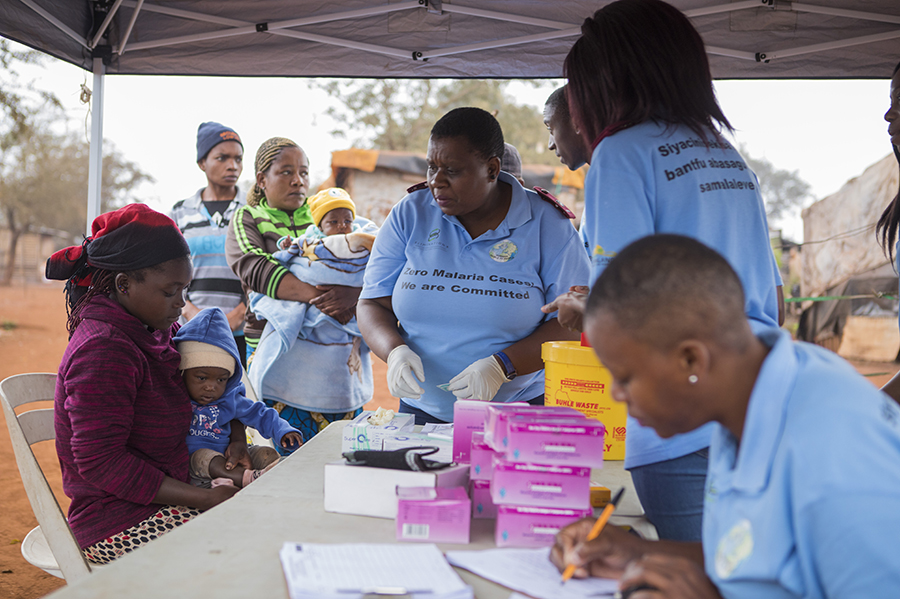The high rates of low birth weight babies in sub-Saharan Africa are a major health concern because these babies face an uphill battle for optimal health from the first tender moments of their lives.
Yet, when asked to name the biggest threats to health in lower-income parts of Africa, many cite something else: malaria. It turns out that malaria – in addition to having taken more lives than any other infectious disease in human history – contributes to the problem of low birthweight babies. In one of five cases in which a newborn has a low birthweight, a malaria infection in the mother played a role.
There is good news: Health providers in Africa have a lot of experience treating malaria during pregnancy.
That long track record offers a rich source of data for Global Health Sciences postdoctoral fellow Michelle Roh – who received her PhD from the UCSF Department of Epidemiology and Biostatistics in 2020 – to mine and help determine how to reduce malaria’s toll on infants.
“For health practitioners to provide drug-based interventions that prevent malaria in pregnancy and help babies develop healthily is a powerful tool,” Roh said. “My research aims to help ensure that we don’t lose that win-win when considering alternative anti-malarial drugs to combat resistance.”
A tale of two drugs
The drug sulfadoxine-pyrimethamine (SP) has been used to treat and prevent malaria for long enough that, in many parts of Africa, the malaria parasite has developed resistance to it. Even as practitioners look for alternative drugs, they continue to give SP to pregnant women in areas with malaria transmission because the World Health Organization has endorsed its birthweight-boosting capabilities.
In research published in 2020 in The Lancet Infectious Diseases, Roh began to study the effects alternative malaria drugs have on birthweights. She compared SP to dihydroartemisinin-piperaquine (DP), which was seen as the most promising candidate to replace SP for use among pregnant women.
Her research found that DP is more effective at preventing malaria in pregnancy but less effective at bumping up a baby’s birth weight.
What’s going on here?
Roh and her colleagues had to consider that the two drugs may affect fetal development and preterm delivery in more than one way. By reducing malaria risk in pregnancy, the drugs may allow a fetus to grow strong and be born at full term, but the drugs might also boost birthweight directly, in ways that have nothing to do with malaria.
“As with anything health-related, it’s complicated,” Roh said. “The new funding will allow us to dive deeper into these drugs’ different mechanisms and their impact on birth and infant outcomes.”
A more granular approach
With a new $1-million research award from the National Institutes for Health, Roh and her colleagues will evaluate data from nearly 10,000 pregnant patients across 10 sites in Africa. They will identify patients’ health conditions and how SP and DP affect these conditions and the infants’ outcomes. The ultimate question is whether providers continue to give SP to pregnant patients or prescribe SP and DP in combination to some patients to get the best results for mom and baby.
Also working on the project are UCSF’s Catie Oldenburg, ScD; David Glidden, PhD; Grant Dorsey MD, PhD; Philip Rosenthal, MD; Stephanie Gaw, MD, PhD; and researchers from Stanford University, the Liverpool School of Tropical Medicine, and Emory University. Dorsey and Rosenthal are leading a clinical trial in Uganda studying a combination of the two antimalarial drugs.
SP has known antibiotic and anti-inflammatory properties, so the team hypothesizes it may help fetal development by altering the microbiome, preventing sexually transmitted and reproductive tract infections, or reducing inflammation in the mother. Variations in how SP and DP affect birthweights suggest that, as rates of these illnesses vary, the drugs’ impact will, too. After all, different regions have different degrees of antimalarial drug resistance, different sexual norms and diets.
The researchers hope their work will eventually shape global guidelines that resemble a decision tree pointing to the right drug or drugs depending on the patient and the disease landscape of the region.
“The malaria community has shifted away from the traditional ‘one-size-fits-all’ approach for treatment and prevention, recognizing that the precision medicine paradigm that has garnered so much interest in high-income countries is also worth exploring in resource-constrained settings,” Roh said. “We’re hoping that by combining data from these trials to understand how these drugs affect newborn health, we will help optimize malaria guidelines for pregnant women and their infants.”
Banner photo by Rooftop Productions

